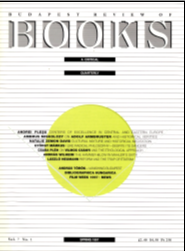
Historical Verities
The review of: Romanitatea Románilor. Istoría unei idei (The Roman Origin of the Romanians: The history of an idea) by Adolf Armbruster; Bucharest: Editura Enciclopedica, 1993, 343 pp.
More...We kindly inform you that, as long as the subject affiliation of our 300.000+ articles is in progress, you might get unsufficient or no results on your third level or second level search. In this case, please broaden your search criteria.

The review of: Romanitatea Románilor. Istoría unei idei (The Roman Origin of the Romanians: The history of an idea) by Adolf Armbruster; Bucharest: Editura Enciclopedica, 1993, 343 pp.
More...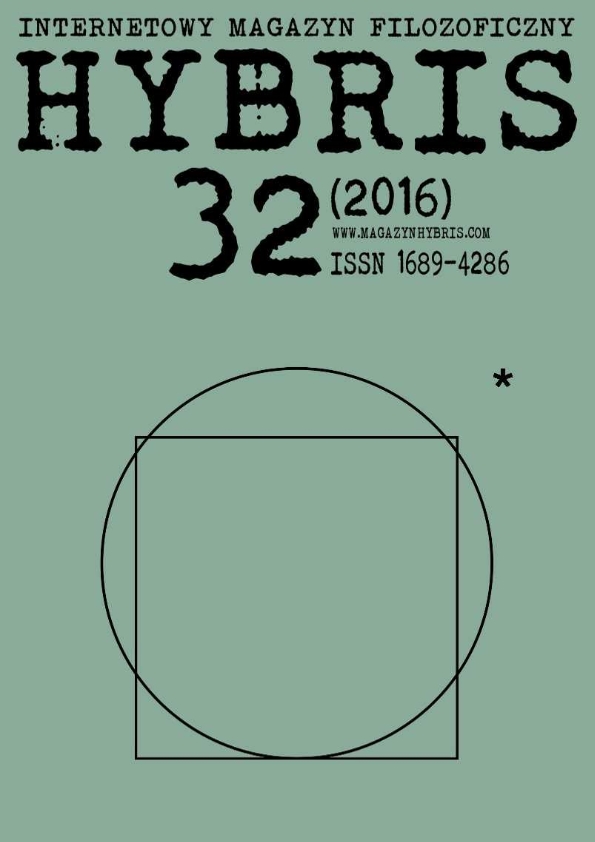
The concept of ageing as a mask refers to, according to M. Featherstone and M. Hepworth, the tension between the identity and experiencing one’s own, aging body. There is a growing disparity between the body and “ I" in the elderly, which results from the fact that they lose “ symbolic capital" and do not accept their own bodies with their mental and physical limitations. Old age exposes and becomes a symbolic nudity, a source of shame in the culture full of images of beautiful, young, physically fit and sexually attractive bodies. We compensate shame and the loss of the symbolic vestment by rejuvenating our bodies and suppressing negative emotions. Old age has become painful, because people live longer than ever before. To justify all treatments aimed at prolonging life, contemporary culture has taken for granted the idea of Hufelad from 1897: “ Long life has always been the main desire and goal of humanity" [1905, 6]. Now, when we embark on prolonging life, we face the problems of recognizing the sense of identity and its social expression in the process of extended ageing, the relationship between our identity and our aging body, which is still an existential project.
More...
Using the public (government) health expenditure data of sixteen states in India from 1980 to 2013, the paper examines the long-run relationship between an increase in public health expenditure and income. We use real GSDP and real per capita GSDP as proxy for income. We apply Westerlund (2007) error correction based cointegration test for estimating the long-run relationship and panel dynamic OLS (DOLS) method for estimating the long-run coefficient of health expenditure. The empirical result shows that public health expenditure and income is cointegrated in the long-run. There is a positive and significant impact of income on growth of public health expenditure whereas the elasticity of public health expenditure is less than one in the long- run. It has also been found that there is a bidirectional causality between income and public health expenditure in the short- run while being unidirectional in the long-run. These research findings would serve as effective policy instruments aiming at achieving universal health coverage by generating more additional resources for health sector and minimizing the state level disparity in the growth of public health expenditure in India.
More...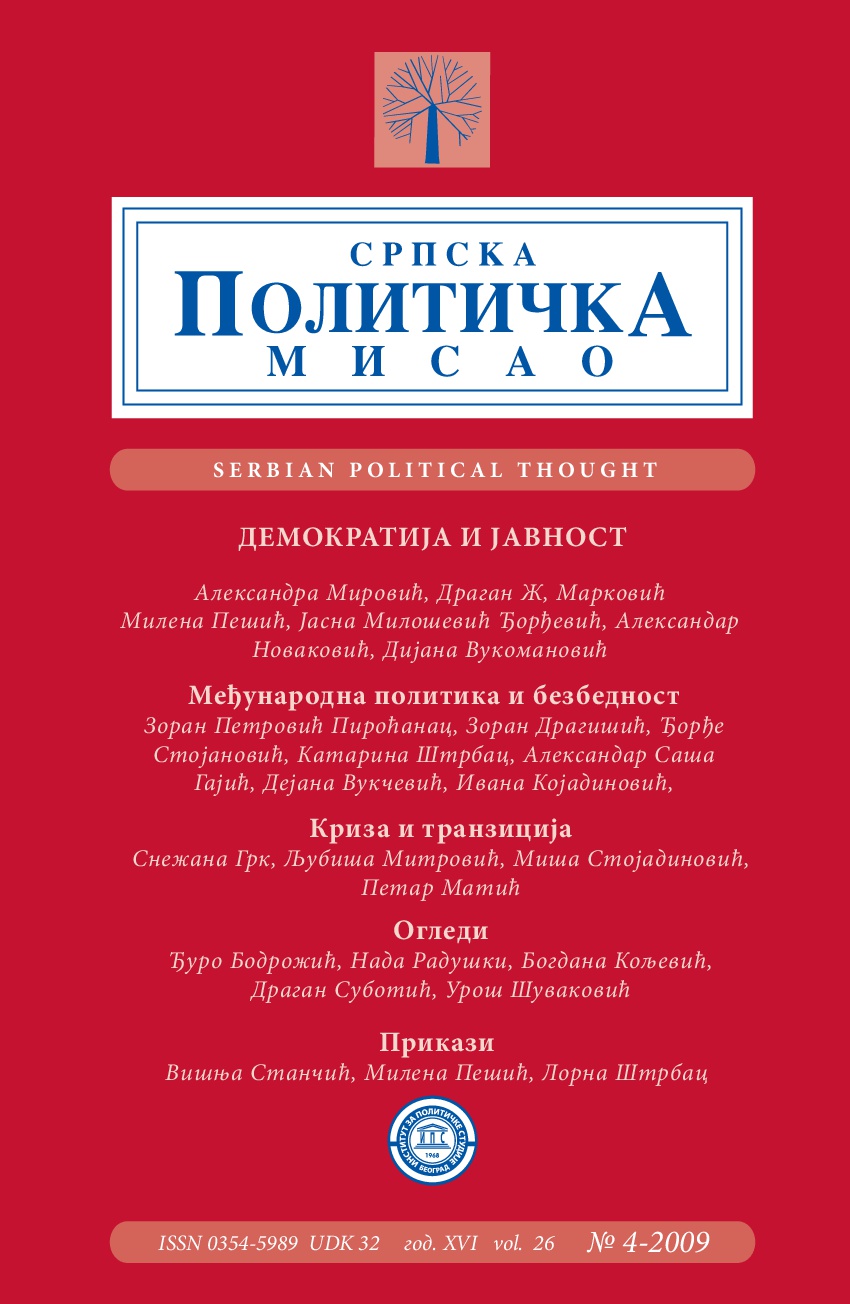
Contemporary world has been characterized by development of new media, among other things, and also by creation of a new and different public. The new media have been influencing everyday along with the life of the communities. Along with development of conventional media, there came development of alternative media, too (Internet, before all). One basic characteristic of new media is the convergence between different media agenda and interactivities. In this text author analyzed the variables that could possibly influence the choice of the media to be used as a basic source of information. The question is - could the correlates in the use of different media be defined at all? Is it demographic characteristics (before all, the age, education and income), or certain psychological characteristics of the people in question? Or could it be that the dominant media that is being used for purpose of informing is primarily defined by cultural and social characteristics of the community? In this text the author also analyzed the data on quantitative research on a representative sample consisting of 1.050 citizens of Serbia older than the age of fifteen that had been performed in 2008.
More...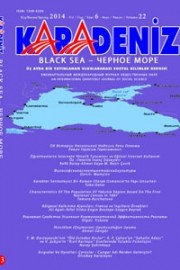
In 1897, in Russia was carried out a national census, which covered the whole empire including Yakut region. There was collected the unique data on the population of the state. The materials of the population census allow a reconstruction of the socio-economic development of the region. For the first time, there was collected sufficient data on the indigenous population of Yakutia, about traditions, about the lifestyle, the changes taking place in this area.
More...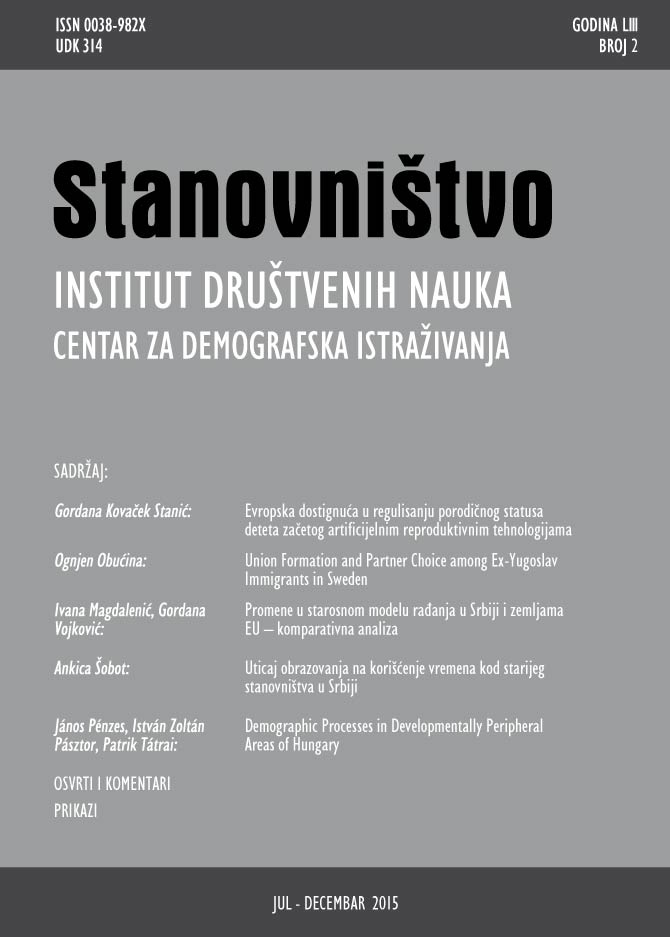
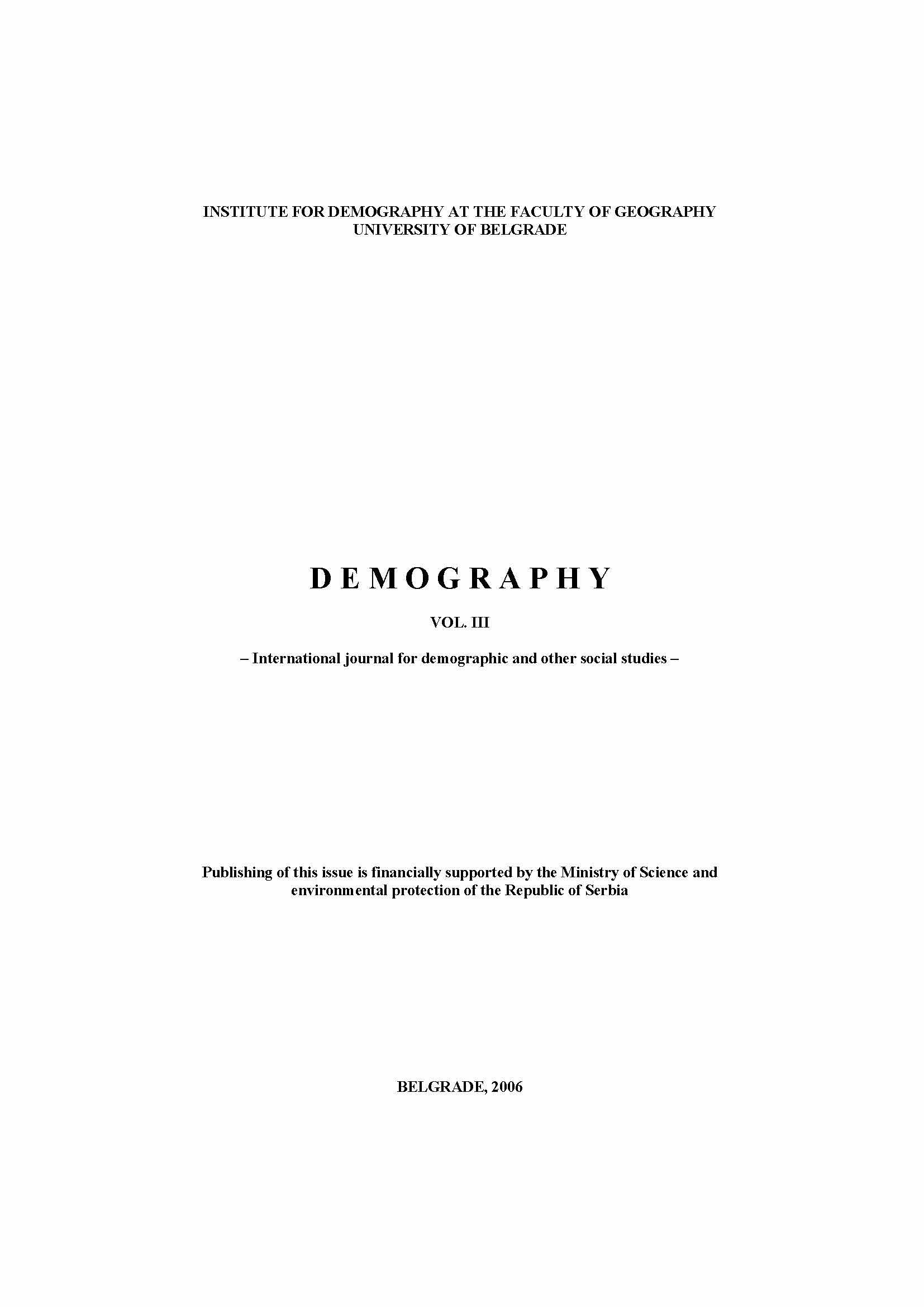
Radmanići village, which was located 25 km southwest of Banja Luka, next to the main road Banja Luka–Čañavica–Mrkonjić Grad, belongs to the group of settlements that have been expatriated (depopulated) according to the plan. It was expatriated (depopulated) from 1971 to 1976, when population mostly emigrated to Vojvodina, to the settlements in Srem. At the place where village was situated, building and areas (now covering 65 km2, including parts of the territories of neighbouring, also depopulated settlements – Šljivno and some areas in Dobrnja and Vilus) of special assignments have been built during time. This article embraces main characteristics of the settlement and the population before the expatriation (depopulation).
More...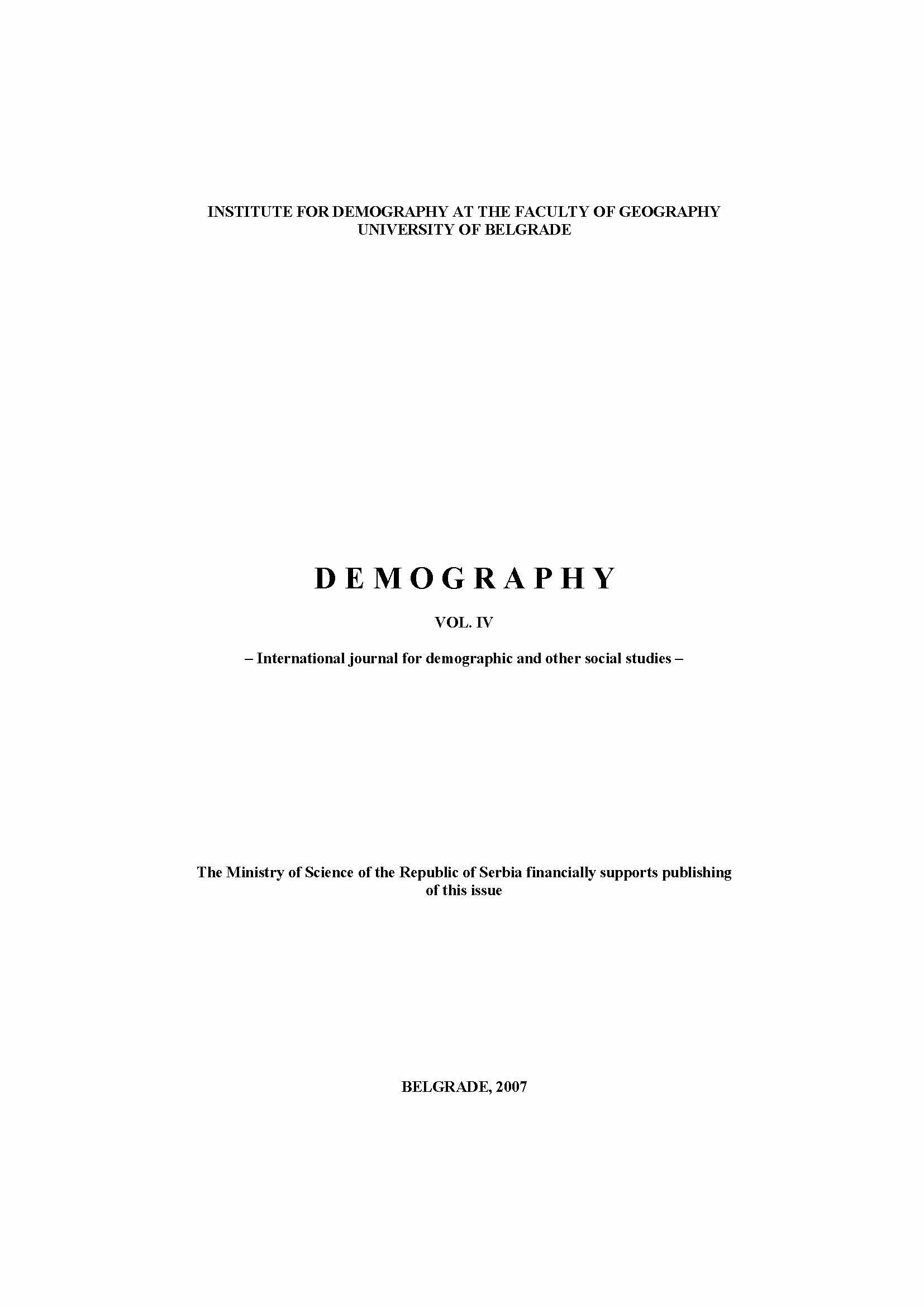
The emergence of negative trends in the demographic development of Russia falls on the end of the 1960s. The demographic crisis observed in modern Russia is one of the most serious threats to the country's transition to the knowledge economy society. It creates quite real, tangible risks for Russia, creating a threat to Russia's territorial integrity, making it impossible to sustainably develop the country's economy and social sphere in the coming XXI century. The size of the demographic crisis and the actions of population policy is the word in this work.
More...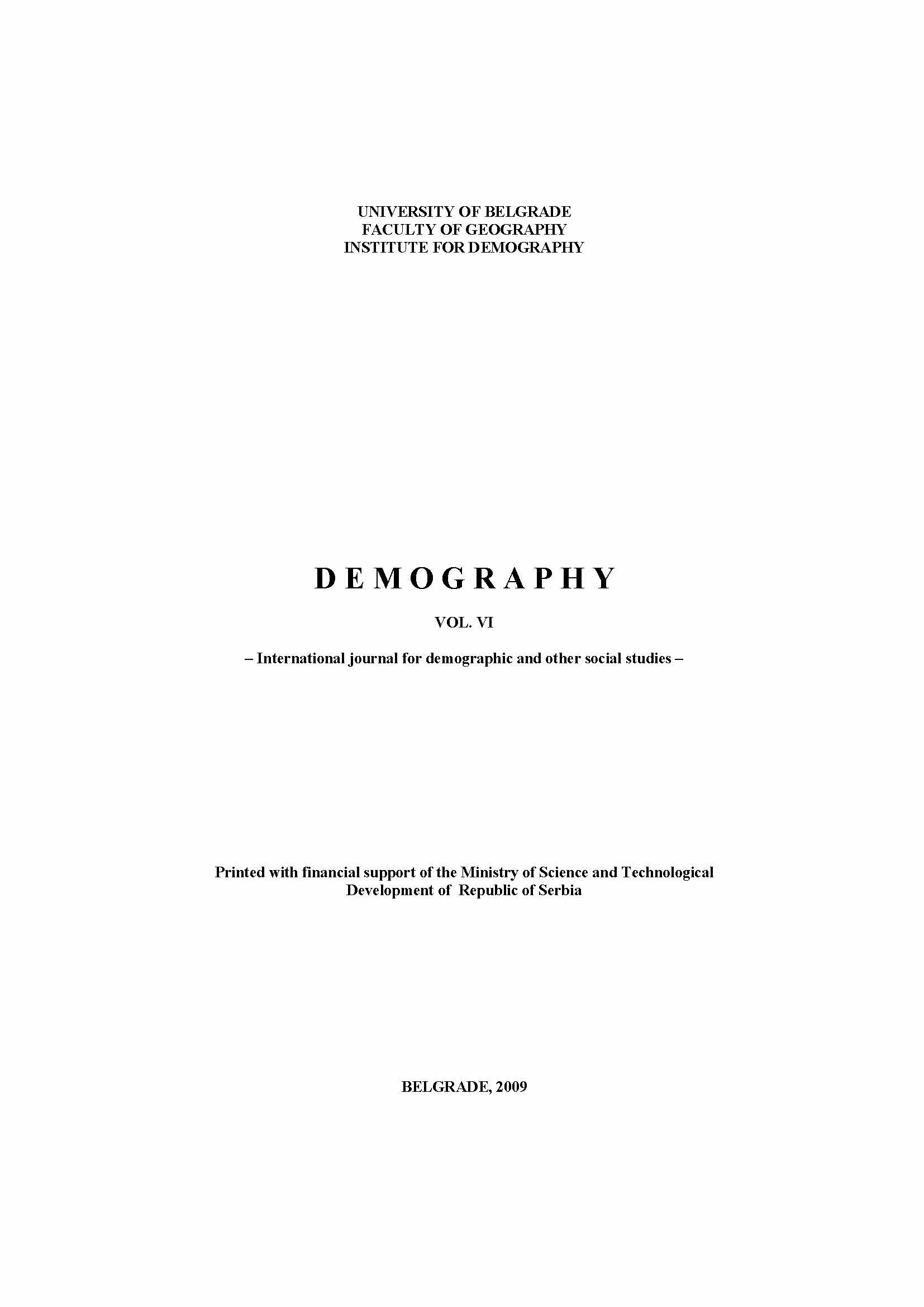
The paper analyses changes in the composition of the Serbian capital’s labor force, which changes have started developing at the same time as similar transitional changes in other ex-communist countries trough-out Eastern Europe. Apart from basic demographic parameters, such as: changes of the activity rate, employment, unemployment, composition against type of activity,age and occupation, additional parameters included in the labor force official pools are analyzed. Parameters included in the analysis secure an international match, so a further comparative analysis of similarities and differences of similar trends in development processes observed in other cities outside of the EU could be done, as well as an analysis of similarity of trends observed in emerging global cities or in primate cities of the global sub-periphery and periphery.
More...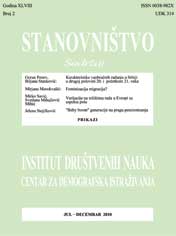
The review of: „Viktimitet straijih ljudi/ The Victimology of Elderly People“ by Miomira Kostić; Pravni fakultet Univerziteta u Nišu, Centar za publikacije, Socijalna misao, Beograd, 2010, str. 247
More...
Early adulthood is a critical life period in the perspective of choosing lifestyle and searching for meaning in life. Moreover, this period is of high risk to one’s health. Addictions, destructive behavior, accidents, transport crashes and violence, as the most common causes of death and disability among young people, are also associated with lifestyle factors (WHO, 2009). In planning this study, the authors formed the research question whether the stronger meaning in life can predict the healthier lifestyle? Attempting to answer this question, the authors set the goal to evaluate relationships between health-related lifestyle and different dimensions of meaning in life in early period of adulthood. Method. 218 adults (136 women and 82 men), aged 20 to 30 years (M=24,13; SD=3,35), participated in the study. Participants completed three questionnaires: Lifestyle Questionnaire created by the authors, measuring six lifestyle areas (nutrition, physical activity, alcohol and substance use, smoking, sexual behavior and risky behavior); Purpose in Life Test (Crumbaugh and Maholick, 1964) and Purpose in Life Questionnaire (Steger et al., 2006). The information of subjects’ demographic and social status was also recorded. Results. The purpose in life is an important predictor of the healthy lifestyle, i.e. healthier nutrition, less alcohol and other substance use, less tobacco smoking, weaker risky behavior and safer sex. Presence of meaning predicts higher physical activity and weaker risky behavior. No significant associations between health-related lifestyle and search for meaning in life during early adulthood have been determined. Female gender is an important predictor of healthier lifestyle and healthy behaviors. Young women (compared with men) tend to eat healthier, use less alcohol or other psychoactive substance, and demonstrate safer sexual behavior.
More...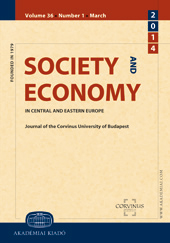
The goal of the paper is to analyze the demographic discrepancies in the relationship between customers’ perceptions of corporate social responsibility (CSR) and their loyalty towards mobile telecommunication companies, within the particular socio-cultural and economic context of one of the largest national markets of Central and Eastern Europe. For this purpose, a survey was conducted among a sample of 1,464 mobile telecommunication customers from the urban areas of Romania. The findings emphasize several significant dissimilarities between gender, age, education and residence type based consumer categories in what concerns the impact of various CSR dimensions, as perceived by customers, on corporate brand loyalty. The results have practical implications for enhancing corporate brand loyalty in the regional mobile telecommunication market by outlining those CSR policies which should have priority in implementation and, especially, communication.
More...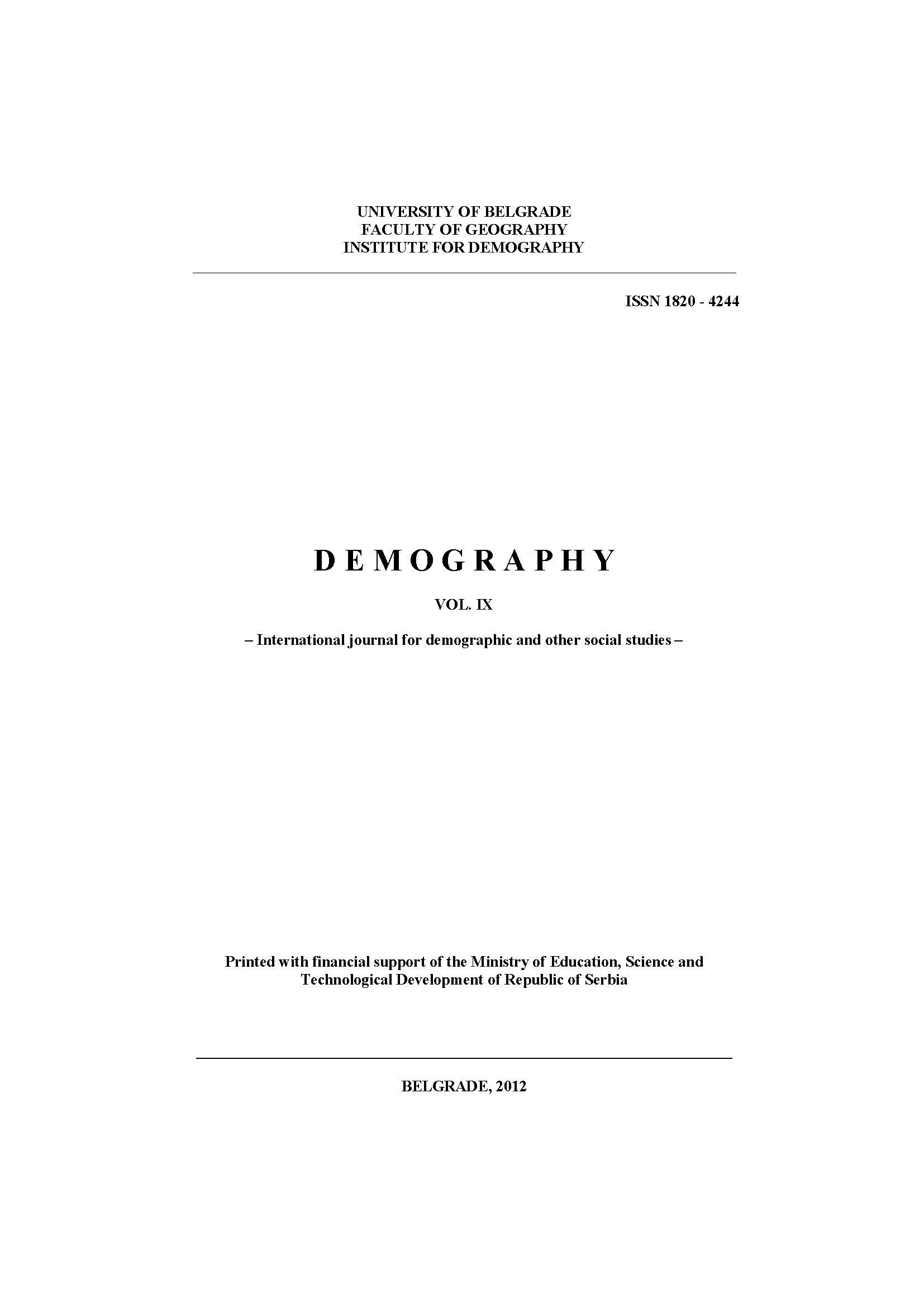
By the first preliminary results, Serbia had a population of 7.1 million, which, according to the Serbian Statistical Office, constitutes a decrease of 377 thousand persons compared to the size of the population at the time of 2002 Census. However, given the different definitions of total population (with or without persons abroad who have been outside of the country for less than a year, and further, with or without the internally displaced persons from Kosovo and Metohija), this comparison of the initial results of 2011 Census and the final results of 2002 Census is methodologically unsound, leading to incorrect conclusions about the change of the population size between the two censuses. In this paper, we analyze the changes in population size for the intercensal period 2002-2011 based on comparable data from the 2002 and 2011 Censuses, which allows for more accurate understanding of depopulation of Serbia and the immediate demographic causes of this depopulation. According to the authors, Serbia's population (in country) in fact decreased by 424 thousand persons. The analysis concerns all territory levels, according to the administrative and territorial distribution which has come valid on 1 July 2011, and according the Nomenclature of Statistical Territorial Units (statistical regions, districts/areas, municipalities, settlements).
More...
This article outlines the main changes in Hungarian-language minority education systems in four neighbouring countries: Romania/Transylvania, Serbia/Voivodina, Slovakia, and Ukraine/Transcarpathia. The author contextualizes minority education policies by reflecting on challenges related to major demographics, educational statistics and institutional development processes. An analysis of minority education’s inner processes is carried out via identifying and describing the role of different, chief educational actors: minority political parties and organizations, the state, and Kin-state institutions. The article also analyses the interaction and possible impact of different Hungarian government bodies and non-governmental minority educational organizations beyond the country’s frontier.
More...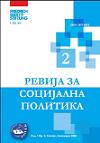
The main aim of this article is empirical analysis of the fertility level and family policies in the Republic of Macedonia. The policies are analyzed from their opportunity to influence on the population development. The policies that are matter of concern in this article are policies that are in a close relation to the childbearing and rearing of children such as maternity policies, parental-leave policies, childcare services, and child benefits.
More...
In the organization of the Network for Strengthening Social Work in Mental Health in Southeast Europe, financed by the DAAD (Deutscher Akademischer Ausatausch Dienst), the third Regional Workshop was held in Zagreb entitled "The Quality of Life in the Institutions for Mental Health". The workshop was attended by experts and students in the field of social work and psychology from: Germany, Croatia, Albania, Kosovo and Macedonia.
More...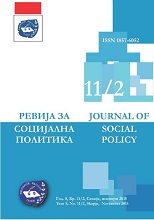
The aging of the population is a challenge for intergenerational support, privately within the family and public in the society. Concerns about intergenerational support are most often found in the younger generation: Will the younger ones continue to support the elderly? Within families, the question would be, do adults want and will be able to help their elderly parents? Intergenerational family ties are made up of both sides and should be equally interested in how aging the population can affect the two generations. Parents help their children for the most part and try to protect their children even when they need help. It is understood that the personal expectations and personal interest of the younger ones will influence how adults will behave toward their elderly parents. Subject of research in this paper are intergenerational links as support systems for the elderly and are studied through the six components of intergenerational support that allow for perceiving how intergenerational relationships affect intergenerational support. According to Bengtson and Schrader (1982); McChasney and Bengtson (1988), six dimensions of intergenerational support are defined: 1. support through friendship; 2. support through affection; 3. support through consent; 4. functional support; 5. normative support; 6. structural support. The conclusion of this research is made up of several segments: a) presents the new forms of intergenerational relationships, b) allows the perception of existing family relationships, c) reveals the causes of harmonious or disturbed intergenerational relationships, d) gives an account of the thoughts of the two generations, e) the analysis of the elements of the six components of intergenerational support allows for the identification of measures to overcome the misunderstandings between generations.
More...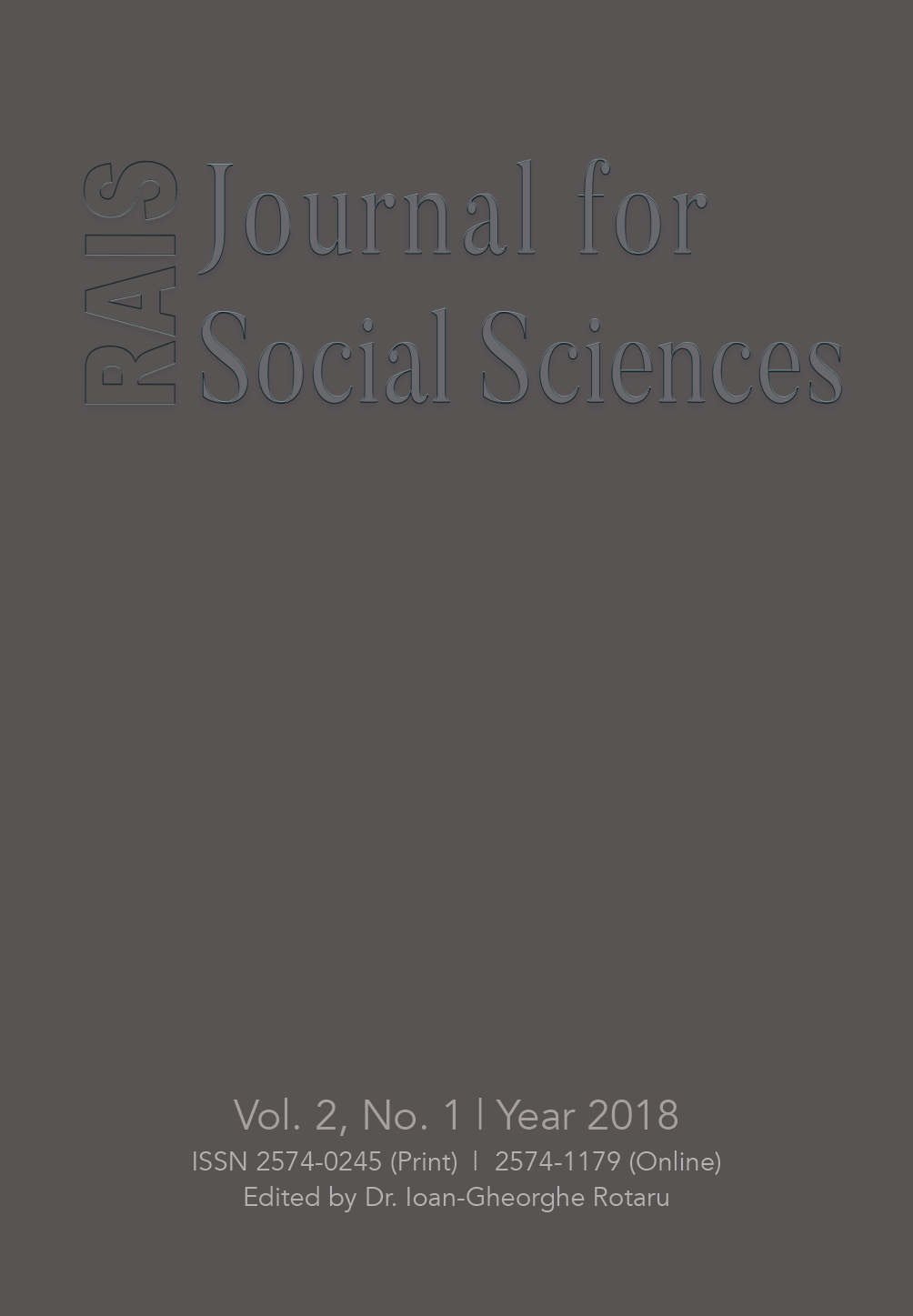
This study attempts to investigate the effects of maternal agricultural production on Population Growth in Cameroon. We have as objectives: (a) explore the determinants of Women in Agriculture, (b) assessed the effects of women working in Agriculture on population growth and (c) derived policy implications on the basis of our analysis. To tackle these objectives, we shall make use of instrumental variable (2SLS) model. Empirical results are based on 2011 Demographic and Health survey collected by the government’s statistics office and Department of statistics of the Ministry of Agriculture and Rural Development. Regarding the determinants of women participation in agricultural production, we observed that mother’s health status, farm size, mother’s education in complete years, urban residence and married women are positively and significantly correlating with women participation in agricultural production. We observed that women participation in agricultural production strongly affects population growth. Other factors positively affecting population growth in Cameroon include: mother’s age in complete years, family size, married mothers and father’s presence in the house. This is a gateway towards economic growth, food security and poverty alleviation in Cameroon.
More...
This article presents the ethnic structure of the population of Serbia and especially etnodemographic changes in Roma population. In Serbia (excluding Kosovo and Metohia) Roma national minority account about 108,2 thousands (1,4% of the total population), according to the 2002 census results. The most important factors that affect to the number and the share of Roma are the natural increase, the migration and particularly changed declaration on national affiliation (“ethnic transfer”). Demographic development of Roma population is characterised by negative tendencies in natural movement, as well as, in the most important demographic structures (age structure of population, educational and economic structures of population, etc.). Roma are relevant national minority in Serbia as well as in the other Balkan countries. Their social, economic, political and cultural position is very difficult, as a result of their marginalization, segregation and discrimination.
More...
Poljoprivredni karakter SR Srbije i dominacija seoskog stanovništva u ukupnom stanovništvu zahtevaju poklanjanje izuzetne pažnje pojavama na selu, i to, kako nauke, tako i politike. Na žalost, ne možemo reći da je naša sociološka nauka bila na visini svojih obaveza i objektivnih mogućnosti.
More...